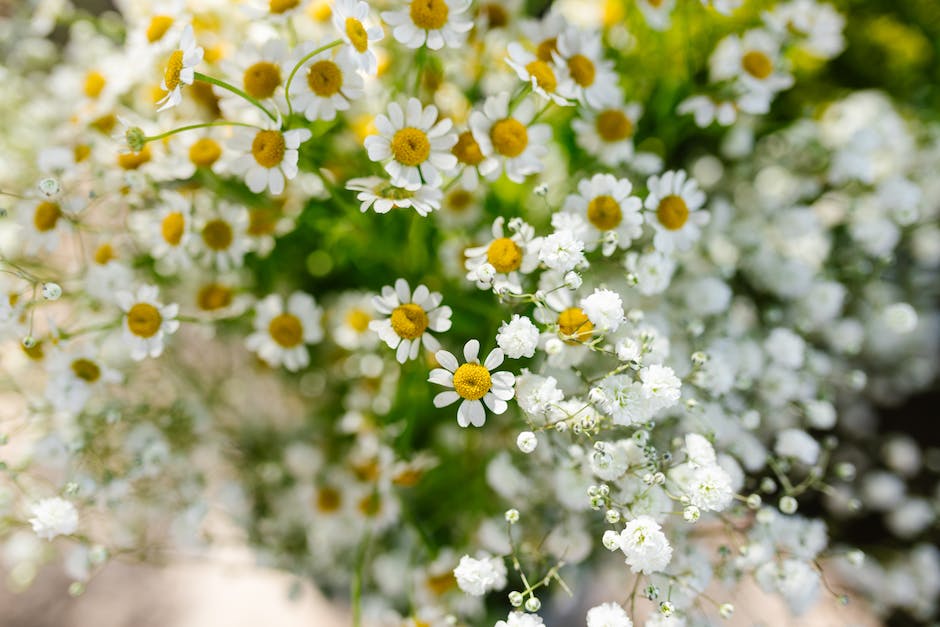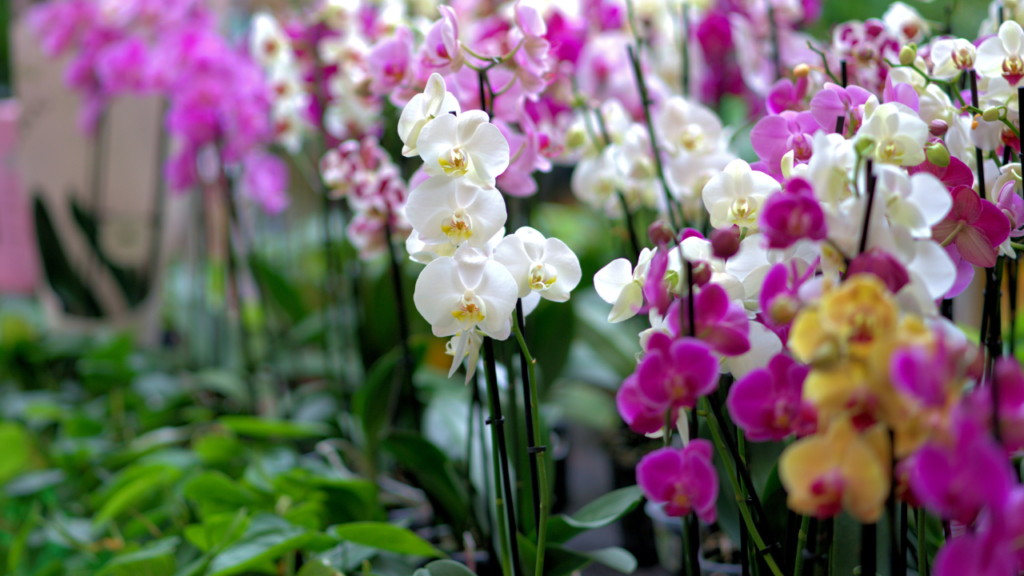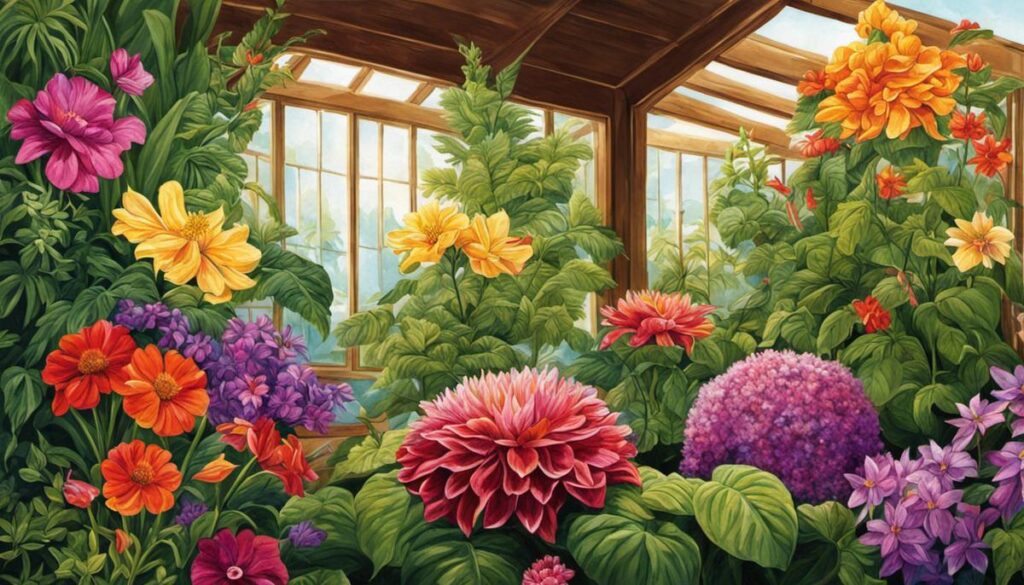The joy of nurturing indoor flowering plants reaches beyond their pleasant aesthetics. While these plants undoubtedly beautify our homes and workspaces, they serve many other roles that enhance our indoor environment, such as purifying the air and improving our psychology health.
This exposition will guide you through a comprehensive understanding of indoor flowering plants, from appreciating their intricate nature to mastering their health care. We will delve into a plethora of indoor flowering plants options, outlining their unique traits, and ultimately equip you with the skills necessary to combat common issues they may face. This is an invitation to the exciting world of indoor flowering plants, promising a nourishing experience for both the plants and the caretaker.
Understanding Indoor Flowering Plants

Understanding Indoor Flowering Plants
Indoor flowering plants are typically grown in containers and are housed within living spaces such as homes, offices, or other indoor areas. They range from popular favorites such as orchids, lilies, and African violets to unique picks such as peace lilies and night-blooming jasmine. These plants typically need consistent temperature conditions, adequate lighting, and specific watering routines to thrive indoors. Understanding the needs of each plant species is essential to maintain their health and encourage their bloom.
Importance of Indoor Flowering Plants
Indoor flowering plants play a significant role in enhancing indoor spaces. They serve as natural decorative elements, bringing a touch of nature into homes and offices. Besides aesthetic value, these plants can also create a calming and relaxing ambiance, which can be beneficial for emotional and mental wellbeing. Moreover, their vibrant colors and interesting shapes can add vibrance to any room, making spaces feel more inviting and hospitable.
Indoor flowering plants are also known to improve air quality. Some species like the peace lily are known to filter harmful toxins from the air, aiding in removing pollutants produced by cleaning products, paints, and certain types of furniture. This natural filtration process contributes to cleaner indoor air, which can be beneficial for those with allergies or respiratory issues.
Benefits of Indoor Flowering Plants
In addition to their aesthetic and air-purifying qualities, indoor flowering plants offer a host of other benefits. For starters, they can contribute to improved humidity levels in indoor spaces. As plants transpire, they release water vapor into the air, which can help maintain a comfortable level of indoor humidity, particularly during dry winter months.
Another significant benefit of indoor flowering plants lies in their potential therapeutic value. The act of caring for these plants is often considered a form of therapy, contributing to stress relief, providing a satisfying hobby, and even encouraging mindfulness.
Enriching Your Indoor Space with Blooming Plants
Enhancing your indoor space with flowering plants can be a delightful endeavor. This pastime allows you to grow an assortment of beautiful blossoms in a regulated environment, independent of the external seasons. The care for these plants typically involves routine watering, proper light exposure, optimal temperature upkeep, and protection from pests and diseases.
Given some research and practical experience, indoor gardening can empower people to foster a broad range of flowering plants in the comfort of their homes or offices. It significantly contributes to making living spaces more vibrant, aesthetically pleasing while improving the air quality and serving therapeutic purposes. A plethora of flower plants suitable for indoor gardening is available, each with unique care essentials and blooming periods, allowing indoor garden enthusiasts to enjoy a garden flourishing in color and life the whole year round.
Diverse Types of Indoor Flowering Plants

Anthuriums: Textured Heart-Shaped Indoor Wonders
Popularly known as “flamingo flowers,” Anthurium plants boast bold, heart-shaped red flowers. These striking, glossy leaves known as spathes, stand out beautifully against their rich, luscious green leaves. As a tropical perennial, Anthuriums flourish in bright but indirect light situation. Plus, these plants also have an added benefit of purifying the air by eliminating toxins like formaldehyde and ammonia, adding to the reasons why they are a cherished choice for indoor gardening.
Orchids: Exquisite Varieties for Indoor Cultivation
Orchids are exquisite indoor flowering plants known for their beautiful, diverse blooms. Orchid varieties that thrive inside include the Moth Orchid (Phalaenopsis) and Lady’s Slipper Orchid (Paphiopedilum). The spike-like flower stems and showy flowers, often seen in hues of white, pink, or purple, can bring elegance to any indoor setting. Orchids prefer indirect sunlight and thrive in moderate to high humidity. It’s worth noting that they can bloom for several weeks to even months, and some varieties go through a rest period before producing new blooms.
African Violets: Compact Houseplant Delights
African violets, or Saintpaulias, are compact houseplants that are loved for their velvety foliage and stunning flowers. These come in different shades of violet, pink, blue, and even bi-colored. African violets are relatively easy to care for, making them a favorite among indoor gardeners. They prefer bright yet indirect sunlight and need to be watered from the bottom to avoid damaging the foliage.
Peace Lilies: The Ever-Blooming Peace-bringers
Another popular choice for indoor flowering plants is the Peace Lily, or Spathiphyllum. Known for their lush foliage and elegant white spathes, Peace Lilies thrive in medium to low light conditions. They bloom throughout the year and are great air purifiers. Moreover, these are resilient plants that do not require frequent watering.
Begonias: Nature’s Canvas of Spectacular Hues
Begonias are indoor flowering plants appreciated for their stunning foliage and vibrant flowers. Famous for their large, rose-like blooms in brilliant shades of red, pink, or white, they bring a burst of color indoors. Their soft, fuzzy leaves can be equally captivating. Importantly, these plants prefer a well-lit location but not direct sunlight, maintaining a balance in watering is also crucial for healthy Begonias.
Kalanchoe: Succulent charm with Prolific Blooms
Kalanchoes are flowering succulents that need minimal maintenance. These plants are delightful with their fleshy foliage and clusters of small, brightly-colored flowers. Kalanchoes come in many varieties like Flaming Katy, Paddle Plant, and Widow’s Thrill, each having its unique appeal. They enjoy ample sunlight indoors and require well-drained soil.
Indoor flowering plants each possess their unique allure and appeal, providing a distinctive aesthetic touch to your living spaces. When properly cared for and tended to, they are capable of enriching any indoor environment with their brilliant hues and mesmerizing floral arrangements.
House Plant Essentials
Caring for Indoor Flowering Plants

Getting to Know the Essential Requirements of Indoor Flowering Plants
Keeping indoor flowering plants vibrant and healthy involves understanding their distinct environmental needs. These crucial factors often include elements like the appropriate degree of lighting, the ideal type of soil, watering schedules, and a suitable temperature range.
Optimal Lighting for Indoor Flowering Plants
Light plays a significant role in the growth and development of indoor flowering plants. Most flowering plants require a good amount of natural light to thrive. However, this does not mean that they should be placed in direct sunlight. Some plants prefer bright but indirect light. Research the specific needs of your plant regarding light.
Watering Indoor Flowering Plants
Watering indoor flowering plants might seem like a simple task, but it can be more complicated than it appears. The amount and frequency of watering can greatly depend on the type of plant, the size of the pot, and the surrounding environment. Overwatering can be just as harmful as underwatering, often causing root rot and other diseases. It’s essential to keep the soil moist but not over-saturated.
Ideal Temperature for Indoor Flowering Plants
The correct temperature is fundamental to the well-being of indoor flowering plants. Generally, most indoor plants thrive in temperatures between 65 and 75 degrees Fahrenheit. However, some tropical plants may prefer warmer conditions, while other plants may prefer cooler temperatures. It is crucial to research each plant’s specific needs.
Choosing the Right Soil Type
The soil in which the indoor flowering plants rest is also crucial for their growth and development. The soil should be well-drained and nutrient-rich. Using a high-quality potting mix rather than garden soil can ensure the plants are getting the necessary nutrients. Certain plants might need soil amendments like peat moss or perlite to ensure optimal growth.
Expanded Care Needs for Indoor Flowering Plants
Tending to indoor flowering plants involves more than just providing water and light. A variety of factors contribute to the successful growth and development of these plants, such as temperature, soil type, and use of fertilizer. By adding relevant nutrients that may be missing in the potting mix, you’re ensuring your plants can thrive healthily.
Another noteworthy aspect of indoor plant care is promoting good air circulation. Stagnant air conditions can increase the plants’ susceptibility to diseases. A low setting on a simple desktop fan can generate a gentle air flow that these indoor plants will benefit from.
Regularly keeping an eye out for signs of pests or diseases is critically important for maintaining the health of indoor flowering plants. Most pests, like aphids, spider mites, or scale insects, tend to hide underneath leaves.
It’s important to remember that indoor flowering plants need more than just water and sun. Consistent care, from checking for signs of illness or bugs, to timely repotting, and creating an ideal growing environment, is key to their wellbeing.
Problems and Solutions for Indoor Flowering Plants

Typical Issues Encountered by Indoor Flowering Plants
Despite their role in beautifying our interior spaces, indoor flowering plants can face several challenges that affect their growth and health. The most common problem areas for these indoor companions include pest attacks, diseases, and unfavourable environmental conditions that are not conducive to their growth.
Practical Solutions for Indoor Flowering Plants
Addressing these issues requires a combination of preventive measures and active solutions.
Pest Problems
Pests are a common problem for indoor plants. These miniature intruders, including spider mites, scale insects, and aphids, can inflict considerable damage and often prove challenging to eliminate. They feed on plant sap weakening plants and spreading diseases.
Routine inspection of your plants can help to identify and manage infestations before they become significant. Using a soft cloth to wipe leaves can remove pests and also dust that can block light. If infestations persist, insecticidal soap sprays or neem oil can be applied as a more aggressive approach.
Plant Diseases
Plant diseases are another category of issues that plague indoor flowering plants. Fungi, bacteria, and viruses can harm your plants, with symptoms ranging from discoloration and spots to wilting and, in severe cases, death of the plant. Overwatering or inadequate ventilation often leads to these problems, providing a perfect breeding ground for diseases.
Avoid overwatering your plants and ensure they are placed in a space with good air circulation, which prevents the buildup of moisture. When watering, try to keep the foliage dry, as wet leaves can become a hotbed for fungal and bacterial growth. Should a plant demonstrate signs of disease, such as discolored leaves or spots, prune the affected parts to prevent further spread.
Environmental Challenges
Environmental challenges can also hamper the growth and bloom of indoor flowering plants. This can include insufficient light, incorrect watering, nutrient deficiency, or unsuitable temperature.
Each plant species requires a specific range of conditions to thrive. Research your plant’s needs when it comes to light, temperature, water, and nutrients. Place your plants in a spot that provides them with the appropriate amount of sunlight and maintain the recommended temperature. Ensure you are watering them correctly; overwatering is a more common mistake than underwatering. Lastly, feed your plants with a balanced fertilizer suitable for the particular species.
Conclusion
While these are generally comprehensive solutions, each plant is unique and may encounter various situations. Therefore, it’s crucial to pay close attention to any changes in your plants’ appearance or behavior as they can offer clues to what they need.

Having gone over the diverse types of indoor flowering plants, their care, and potential problems that may incur, it is clear to see that Indoor gardening is not just another mundane endeavor. It is a rewarding process that cultivates patience, attentiveness, and reverence for nature, despite being within our living room. Furthermore, nurturing these green companions nurtures us back by enhancing the ambiance of our indoor spaces and contributing to our well-being. Therefore, by taking the information presented to heart, anyone can become a competent caretaker of indoor flowering plants, transforming their indoor spaces into vibrant, blooming sanctuaries.

